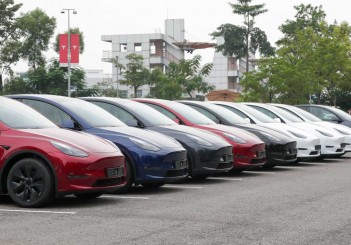Could a company that produces around 400,000 metric tons of hydrogen a year - comparable to 2 billion litres of diesel - be the one to find success with fuel cell vehicles?
Ineos Group is giving it a whirl, though even the petrochemicals behemoth is increasingly concerned that policymakers in the UK and Europe aren’t willing to get on board.

The closely held multinational has built a hydrogen-powered version of the Ineos Grenadier, the rugged sport utility vehicle born out of its billionaire owner Jim Ratcliffe seeing an opening when Land Rover retired the original Defender.
The Grenadier Demonstrator has a lot going for it: BMW AG’s latest hydrogen fuel cell powertrain, a chief engineer who developed G-Wagons while at Mercedes-Benz Group AG, and the capability to climb mountains like conventional gas and diesel-burning versions - but without the emissions.
Electric drive units that deliver torque vectoring to each wheel will make summiting otherwise treacherous terrain a cinch.
Still, Ineos Automotive was more optimistic about fuel cell vehicles being part of the mix when it embarked on the project a year ago than it is today.

In an interview ahead of the SUV’s debut at the Goodwood Festival of Speed, chief executive officer Lynn Calder said policymakers are "picking horses” and seem to want to go all-in on battery-electric vehicles.
"Whether it’s futile or not, I’m going to use our demo this year, I’m going to get out and I’m going to meet people, and I’m going to show them,” she said.
"I’m going to keep on banging my already quite hackneyed drum, which is to say there is no one fix.”
The government officials Ineos is having a hard time convincing aren’t alone in their skepticism.
BloombergNEF removed fuel cell models from the passenger car portions of its annual Electric Vehicle Outlook report published last month, citing their lack of traction.
"We will revisit this topic if and when fuel cell vehicles hit 0.1% of global passenger vehicle sales,” BNEF analysts wrote.

Europe’s biggest operator of the electrolyzers that make hydrogen from water takes a different view. While Ineos has a smaller battery-electric SUV coming in 2026, it’ll be a better fit for taking shorter trips around town.
A fuel cell Grenadier, on the other hand, will be well suited for longer journeys and better able to handle heavy payloads - that is, if enough hydrogen refueling infrastructure gets set up.
Ineos isn’t sitting on its hands, having committed years ago to investing more than €2 billion (RM10.3bil) in new production of green hydrogen across Europe. It’s part of a trial project attempting to repurpose natural gas pipelines to distribute hydrogen along the Scottish coast.
But before Ineos commits to moving forward with a fuel cell vehicle, the company is looking for green shoots that governments are willing to invest in and incentivize getting the market off the ground.
"I’m not just going to sort of whinge without offering to be part of the solution,” Calder said.
"There’s no point in talking about us having this unique view of the industry from a hydrogen perspective if we’re not prepared to put our money where our mouth is. We are, but this is such a massive take-on.”










